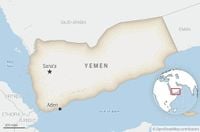On September 6, 2025, a critical digital lifeline was abruptly severed: multiple undersea submarine cables in the Red Sea were cut, causing sweeping internet disruptions across Asia, the Middle East, and parts of Africa. The incident, which experts say could take weeks or even months to fully repair, has thrown a spotlight on the world’s reliance on these fragile, fiber-optic arteries—and the vulnerabilities that lurk beneath the waves.
The Red Sea is no ordinary stretch of ocean. According to Bloomberg, nearly 17% of the world’s internet data flows through this narrow corridor, connecting Europe to Africa and Asia via Egypt. In fact, the Bab el-Mandeb Strait, a critical chokepoint at the southern end of the Red Sea, funnels about 25% of global data traffic between Asia and Europe. With 15 major cables packed into this slender passage, the risks are magnified—and when disaster strikes, the effects ripple far and wide.
That’s exactly what happened earlier this month. Major cables impacted included the South East Asia–Middle East–Western Europe 4 (SEA-ME-WE-4), India–Middle East–Western Europe (IMEWE), and FALCON (operated by GCX). The IMEWE cables, near Jeddah, Saudi Arabia, and the FALCON GCX cable in Kuwait, were among those severed. The fallout was immediate: Microsoft Azure reported the outage starting at 05:45 UTC on September 6, warning of “increased latency” for traffic traversing the Middle East, especially on routes between Asia and Europe. Cloudflare, a giant in internet security and performance, reported delays of up to 30% between India and Europe. In the UAE, networks like Etisalat and Du experienced slow speeds and intermittent access, while Kuwait’s authorities confirmed direct impacts on the FALCON cable.
“A series of subsea cable outages in the Red Sea has degraded internet connectivity in multiple countries, including Pakistan and India; the incident is attributed to failures affecting the SMW4 and IMEWE cable systems near Jeddah, Saudi Arabia,” NetBlocks, a network monitoring company, posted on Mastodon. The list of affected countries is long: India, Pakistan, Saudi Arabia, the UAE, Kuwait, and beyond. Even cloud services—those invisible engines behind everything from streaming to banking—were hit, as Microsoft Azure scrambled to reroute traffic through alternative, longer paths.
But what caused this digital calamity? Early analysis by the UK-based International Cable Protection Committee (ICPC) points to a familiar culprit: commercial shipping activity. “Commercial shipping activity,” likely a vessel dropping and dragging its anchor across the cables, is to blame, said John Wrottesley of the ICPC. Globally, about 30% of the 150–200 cable incidents each year are caused by dragged anchors, especially in shallow, congested waters like the Red Sea. The region’s congestion has only grown worse amid ongoing Houthi attacks on shipping, which have forced vessels to reroute and increased the risk of accidental damage.
Yet the story doesn’t end with maritime mishaps. According to the Associated Press, the latest cable cuts coincide with ongoing conflict involving Yemen’s Houthi rebels and Israel. Yemen’s internationally recognized government has accused the Houthi militia of direct attacks impacting digital infrastructure. Moammar al-Eryani, Yemen’s information minister, declared that the cable cuts “cannot be isolated from the series of direct attacks carried out by the Houthi militia.” He called for the international community to “take a firm stance to stop these escalating threats and protect the digital infrastructure that serves as the lifeline of the modern world.”
Repairing these cables is no small feat. As Yasser Saied, Consulting Systems Engineer at cybersecurity company Palo Alto, explained to Khaleej Times, “Worldwide, there are only three or four companies that can fix such a cable. To fix such a cable, you need very high technology as they are buried deep under the ocean. You need special fibre divers who can go to the depths of the ocean. They will need to find exactly where the cut occurred and then fix it. So it is not easy an easy operation and could take months.” Experts estimate disruptions may last up to six weeks in some areas, as repair ships must navigate conflict zones and obtain permissions from multiple countries. The cost? Between $1 million and $3 million per incident, not to mention the logistical headaches of coordinating repairs in a volatile region.
For those living through the outage, the consequences are more than abstract. UAE residents, for example, have faced days of slow or unreliable internet. “I was on my way to a location on the outskirts of Abu Dhabi and my Google Maps wouldn’t load,” said Urmi K. “What should have taken me 1.5 hours ended up taking more than 2.5 hours. It was very frustrating.” Another resident shared that she was unable to access her mobile data during a work event, relying on Wi-Fi to get by. Telecom operators like Du and E& UAE have posted public messages warning customers of ongoing slowness and promising to work with international providers to resolve the issue.
Despite these challenges, the internet’s underlying design offers a glimmer of hope. Its decentralized, “network of networks” architecture means there’s no single point of failure. When a cable is cut, data can be rerouted through other cables, satellite links, or regional networks. Protocols like the Border Gateway Protocol (BGP) automatically find new paths. Content Delivery Networks (CDNs) such as Cloudflare and Akamai cache content closer to users, reducing dependency on long-haul connections. As a result, total blackouts are rare—even in the face of catastrophic events.
Still, the Red Sea’s status as a digital weak spot has become impossible to ignore. The timeline of recent incidents reads like a warning siren: from late 2023 through 2025, repeated disruptions have hammered the region, with outages sometimes lasting months. The February 2024 cuts, for instance, disrupted about 25% of Asia-Europe data traffic, with repairs dragging on for up to six months due to security delays. In March 2025, the PEACE cable was cut 1,450 km from Zafarana, Egypt, but was repaired in about three weeks thanks to an efficient response.
Looking ahead, telecom firms are racing to fortify these digital arteries. New land-based fiber routes linking India, the Middle East, and Europe are being carved to bypass vulnerable subsea chokepoints. Satellite-based alternatives like Starlink offer some redundancy, but as Swapnendu M. of Cisco points out, “Satellites today haven’t reached that level yet. They can provide some kind of redundancy as a failover when physical path is not there. But when we talk about low latency or ultra low latency and these things, very high bandwidth in terabits, submarine cables is what we rely on.”
As the world’s data flows through these fragile threads, one thing is clear: resilience isn’t just a buzzword—it’s a necessity. The Red Sea cable cuts are a wake-up call, forcing nations, companies, and individuals to rethink how we keep the world connected, even when the unexpected happens beneath the surface.




